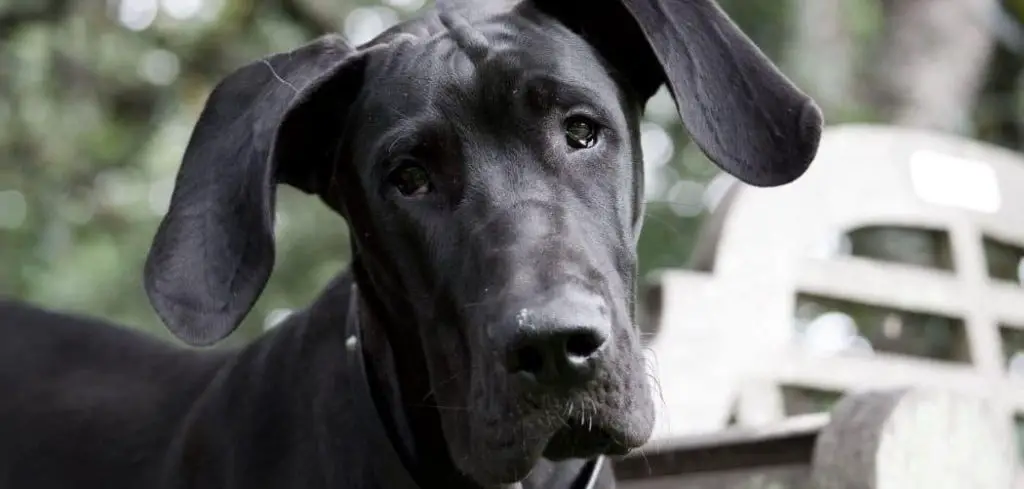If your dog is in heat and not eating, it can be concerning and confusing. Changes in behavior and appetite during this time are not uncommon, but knowing what’s normal—and what’s not—can help you care for her with confidence.
We outline the common causes of a dog in heat not eating, what you can do at home, and when to seek veterinary help.
Dog in Heat and Not Eating — Why It Happens
When a female dog is in heat, it’s not uncommon for her appetite to change. Hormonal shifts during this period can cause reduced interest in food, increased anxiety, behavioral changes, and physical discomfort.
This temporary anorexia may last for a few days or throughout the estrus cycle. However, it’s important to rule out other health issues like infections, pain, or gastrointestinal upset that could also cause appetite loss in a dog coincidentally in heat.

Dog in Heat and Not Eating: Common Causes
Hormonal Fluctuations
When a dog enters heat, her body undergoes a surge in reproductive hormones such as estrogen and progesterone.
These hormonal changes can affect appetite regulation in the brain, leading to temporary loss of interest in food.
You might notice your dog pacing, whining, licking her genital area more frequently, or acting clingy. Combined with her reduced appetite, these behaviors are usually part of the natural heat cycle.
While this is generally not a cause for alarm, prolonged refusal to eat or signs of weight loss should be monitored closely.
Read more: Dog Nesting and Not Eating (What it means)
Behavioral and Emotional Changes
Being in heat can be stressful for many dogs. They may become more sensitive to their surroundings, agitated by the presence of male dogs, or overly affectionate and needy.
This emotional overload can make eating a lower priority.
Some dogs become unusually quiet or lethargic while in heat. Others may retreat from social interaction, hide, or appear restless. All these signs can coincide with decreased appetite.
If your dog usually eats enthusiastically but suddenly stops, emotional stress from the heat cycle could be to blame.
Physical Discomfort or Cramping
Just like humans, some female dogs experience abdominal discomfort during their estrus cycle. This can include uterine cramping, bloating, or tenderness.
Discomfort may make your dog lie down more, move cautiously, or seem reluctant to eat. You may also see her stretching frequently or licking her belly.
While mild cramping is normal, ongoing distress or signs of pain warrant a closer look by a veterinarian.
Nausea from Hormonal Shifts
The spike in estrogen during heat can sometimes cause nausea in dogs. This queasiness can lead to reduced appetite, drooling, or lip-smacking.
Some dogs may approach their food bowl but walk away without eating. Others may eat only soft or bland foods.
If your dog is drinking water, has no vomiting or diarrhea, and otherwise seems alert, mild nausea from hormones is likely.
Pyometra (Serious Underlying Concern)
One serious condition to be aware of in intact female dogs is pyometra, an infection of the uterus that can occur after a heat cycle. It can cause appetite loss, lethargy, vomiting, and a bloated abdomen.
Signs typically emerge a few weeks after the heat cycle but can sometimes overlap with it. If your dog appears weak, feverish, or has a foul-smelling vaginal discharge, pyometra may be the cause.
This is a medical emergency and requires prompt veterinary treatment.
Coincidental Illness
It’s also possible that your dog’s appetite loss has nothing to do with her being in heat. Dental problems, infections, gastrointestinal upset, or ingestion of a foreign object could all cause decreased eating.
If her symptoms don’t align with typical heat behaviors, it’s worth considering other medical causes unrelated to her reproductive status.
What to Do If Your Dog Is in Heat and Not Eating
Start by making your dog as comfortable and stress-free as possible. Create a quiet resting space away from male dogs and household noise.
Offer small, palatable meals more frequently. Try warming up her food or offering bland but enticing options like boiled chicken and rice.
Maintain a consistent routine and provide gentle affection. Avoid introducing new foods or treats, which could further upset her stomach.
Keep track of how much she’s eating, her bowel movements, and her general behavior. Mild reductions in appetite are okay, but complete refusal for more than 24–36 hours should raise concern.
Ensure she stays well hydrated. You can add low-sodium chicken broth to her water or provide ice cubes if she’s reluctant to drink.
When to Call or Visit Your Vet
Call your vet if your dog:
Refuses all food for more than 24–36 hours
Is lethargic or weak
Vomits repeatedly or has diarrhea
Has a bloated abdomen or signs of abdominal pain
Develops a foul-smelling vaginal discharge
Shows signs of distress, panting, or trembling
These could indicate a complication related to the heat cycle or a completely unrelated but serious condition. Pyometra, in particular, requires urgent care.
Even if your dog is in heat, don’t assume appetite loss is always normal. When in doubt, a vet visit can give you peace of mind.
Read more: Dog Not Eating and Drinking a Lot of Water (Is it serious or just dehydration?)
Key Takeaway
If your dog is in heat and not eating, hormonal changes, stress, or mild nausea are the most common causes. Monitor her for any concerning signs and help her feel calm and comfortable.
Appetite usually returns once the heat cycle ends. But if she stops eating altogether or develops other symptoms, it’s best to consult your veterinarian.
Trust your instincts and don’t ignore red flags—your dog depends on you to notice when something’s wrong.
